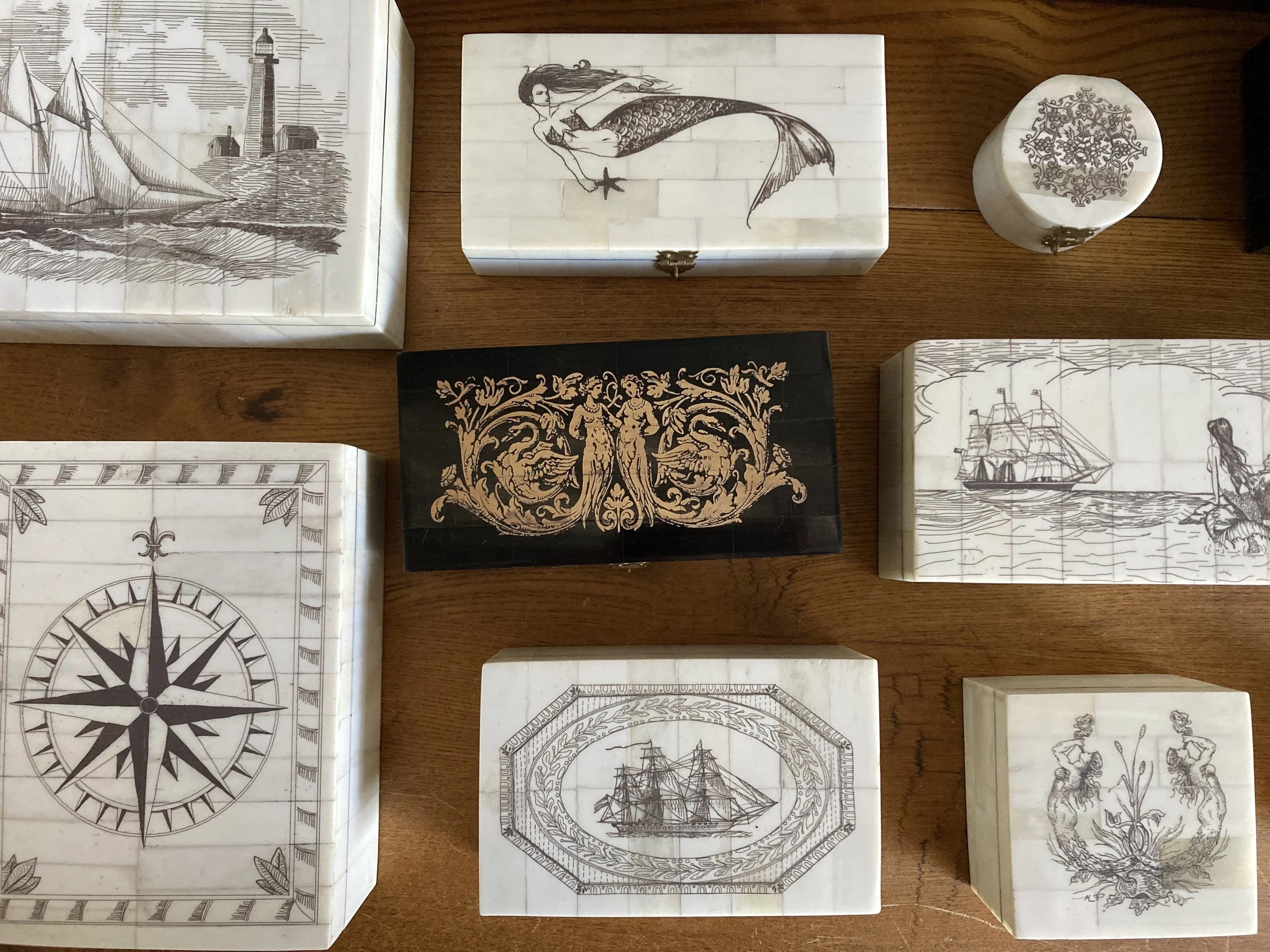Scrimshaw is the intricate art of carving or engraving on bone or ivory, traditionally practiced by whalers and sailors in the 19th century. The word "scrimshaw" itself is derived from the Dutch word "schrimshaw," which means to waste time. This pastime evolved as sailors, often on long and monotonous whaling voyages, turned to artistic expression to fill their idle hours. They used the materials readily available to them, such as whale teeth, baleen, and walrus tusks, crafting elaborate designs and scenes that reflected their experiences at sea and on land.
The process of creating scrimshaw involves several steps. First, the bone or ivory is cleaned and polished. The artist then uses a sharp tool, often a sail needle or a small knife, to carve the design into the surface. Once the engraving is complete, ink or a similar substance is rubbed into the grooves to highlight the intricate patterns. These designs are often nautical themes, such as ships and sea creatures, or scenes from daily life and personal experiences, including portraits, landscapes, and even romantic themes.
Scrimshaw holds significant historical and cultural value. It provides insight into the lives of sailors and whalers, capturing their stories, struggles, and the maritime culture of the time. As a folk art form, it reflects the resourcefulness and creativity of its creators, who used whatever materials they had at hand to produce beautiful and lasting works of art.
Today, scrimshaw is both a collectible and a continuing craft. Antique pieces are highly valued by collectors, while contemporary artists keep the tradition alive, often using alternative materials like cow bone.

